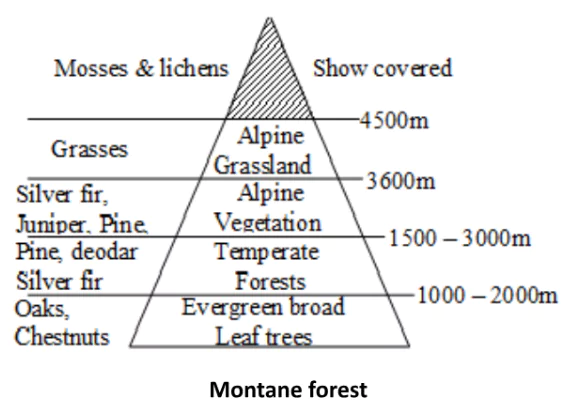![]() June 24, 2024
June 24, 2024
![]() 5407
5407
![]() 0
0
India’s natural vegetation is rich and varied, influenced by climate and soil diversity. From lush tropical forests to arid thorn forests, each biome supports unique flora and fauna. Understanding these ecosystems is essential for environmental conservation and sustainable development.
India boasts diverse natural vegetation due to variations in climate and soil. Indian forests can be categorized into distinct groups:
| Classification on the basis of the availability of water: | ||
| Moist Deciduous Forests | Dry Deciduous Forests | |
| Rainfall | 100-200 cm | 70-100 cm |
| Location | Northeast States along foothills of Himalayas, eastern slopes of Western Ghats & Odisha, Chota Nagpur Plateau, Manipur & Mizoram. | Rainier areas of Peninsula & Plains: Uttar Pradesh & Bihar. (Transitions to moist deciduous on the wetter margins, while on the drier margins to thorn forests.) |
| Flora | Teak, sal, shisham, hurra,
mahua, amla, semul, kusum, and sandalwood etc. [UPSC 2015, 2023] |
Tendu, palas, amaltas, bel, khair, axlewood etc. |

Medicinal Plants
|
| National Forest Policy 1952: Bring 33 percent of the geographical areas under forest cover. |
|
| Must Read | |
| Current Affairs | Editorial Analysis |
| Upsc Notes | Upsc Blogs |
| NCERT Notes | Free Main Answer Writing |
India’s natural vegetation, including tropical evergreen forests and mangroves, is crucial for biodiversity and ecosystem stability. Efforts like social forestry and protected area management aim to preserve these invaluable resources for future generations. By adopting sustainable practices, we can ensure the preservation of our diverse natural heritage.
| Related Articles | |
| Natural Vegetation in India: Types & Characteristics | FORESTS IN INDIA |
| Temperature Distribution: Factors and Impact | BIODIVERSITY |
<div class="new-fform">
</div>
Latest Comments